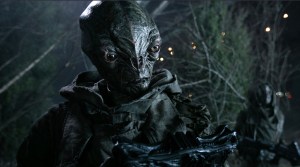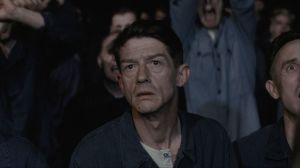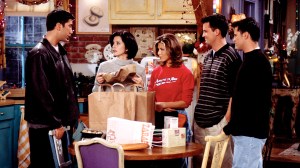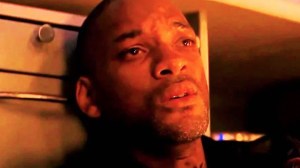
Marvel’s Merc with a Mouth is about to go dark. Marvel today announced Deadpool: Back in Black, a new five-issue miniseries from writer Cullen Bunn (Deadpool’s Secret Secret Wars) and artist Salva Espin (The Deadpool Killogy). The series reveals the untold story of how, after being rejected by Spider-Man, the alien symbiote that would eventually become Venom bonded instead with Wade Wilson.
Videos by ComicBook.com
Set during the 1980s era of Marvel Comics, after the events of the original Secret Wars and Deadpool’s Secret Secret Wars, Deadpool: Back in Black reveals and an untold era of Deadpool’s history, and will feature several guest stars.
ComicBook.com spoke with Bunn about what makes this era of Deadpool’s history so interesting. You can see Espin’s covers for the first two issues in the gallery below.
What is it that attracts the symbiote to Deadpool? Is it simply potential for wanton violence, or something more?
Cullen Bunn: This series takes place immediately after the events of Web of Spider-Man #1, when the symbiote is driven away from Peter Parker. The symbiote is alone, which is a state of being that goes against its chemical makeup. It feels lost and abandoned. But when a group of intergalactic bounty hunters show up to abduct the alien creature, the symbiote seeks out the only other human being to have ever bonded to it… And that’s Deadpool. Wade and the symbiote know each other. In Deadpool’s Secret Secret Wars, Wade met the symbiote before Spidey. The creature is seeking out someone familiar other than the person who tried to kill it.
What unique opportunities and challenges do you find in writing stories like Back and Black and Deadpool’s Secret Secret Wars, which exist within the cracks of continuity?
CB: Since this story takes place within existing Marvel continuity, the challenge is making sure the story works and has some punch while not upsetting the apple cart too much. In this case, we’re dealing with a number of characters with long histories–Deadpool, Spider-Man, and Venom, in particular–and I need to add to those histories without destroying what’s already established. But that’s also part of the fun! I enjoy finding these angles that allow for exciting, fun tales but also add to the characters in today’s stories. With this particular book, I also wanted to make sure that Deadpool’s adventures and the characters he interacted with fit within the chronology of the books that were coming out around this time, so I did a lot of research in terms of where characters might be and when certain other big stories of the era might be taking place.
The solicitation for the series says that Deadpool and the symbiote have “adventures,” and one of the covers shows Power Pack. Can you offer any more details about what these “adventures” may entail and what other guest stars may appear?
CB: This series takes place in the 80s, so I wanted the stories, guest stars, and villains to represent that timeline. This also gave me the opportunity to use a few characters we don’t see much of these days. I’ve always wanted to write classic Power Pack, because I love those characters. But I’ve also always wanted to write an Obnoxio the Clown story, and he works well with both Deadpool and Power Pack. Other characters who will appear are Machine Man, Black Cat, and Kraven the Hunter. And it would seem like Spider-Man would show up at some point, doesn’t it? In addition, there will be some new characters and some more modern characters who we’ll learn have been bumping around the Marvel Universe since the 80s.
You’ve been writing Deadpool for a while now, and you’ve worked on Wade with Salva Espin in the past. How has your take on the character evolved over time? How has the visual style of these stories changed?
CB: I feel like the book Salva and I are doing now has a lot more hyper-kinetic action than books we’ve done in the past. In part, that’s because we’re both gotten more comfortable with each other as collaborators. But it also has a lot to do with the subject matter. Deadpool is already a visually dynamic character, but when you add the Spider-Man-like hijinx and gooey shape-shifting power of the symbiote, we get into some really wild territory.
Do you find that you write Deadpool differently in a series like Back in Black than you do in a modern setting, as in Deadpool and the Mercs for Money?
The Deadpool in Mercs for Money and the Deadpool in Back in Black are the same guy, but I definitely write them a little differently. If you read a book from the 80s, you’ll see that characters were written differently back then. They’ve evolved over time. So I’m writing Deadpool as I think he would have been written in the 80s. He hasn’t evolved into the Wade Wilson we know and love today… Which is a little terrifying if you really think about it.
Deadpool: Back in Black #1








